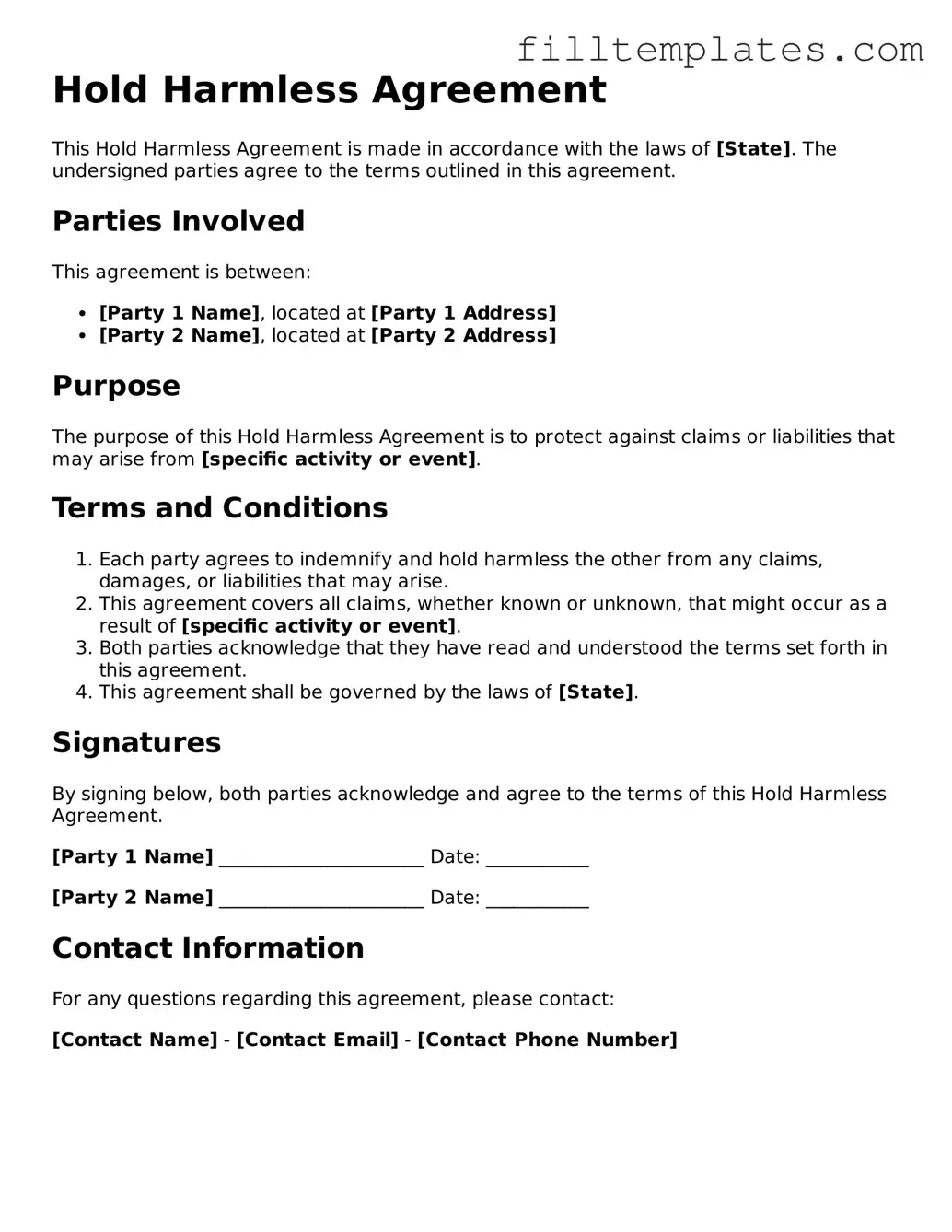Hold Harmless Agreement
This Hold Harmless Agreement is made in accordance with the laws of [State]. The undersigned parties agree to the terms outlined in this agreement.
Parties Involved
This agreement is between:
- [Party 1 Name], located at [Party 1 Address]
- [Party 2 Name], located at [Party 2 Address]
Purpose
The purpose of this Hold Harmless Agreement is to protect against claims or liabilities that may arise from [specific activity or event].
Terms and Conditions
- Each party agrees to indemnify and hold harmless the other from any claims, damages, or liabilities that may arise.
- This agreement covers all claims, whether known or unknown, that might occur as a result of [specific activity or event].
- Both parties acknowledge that they have read and understood the terms set forth in this agreement.
- This agreement shall be governed by the laws of [State].
Signatures
By signing below, both parties acknowledge and agree to the terms of this Hold Harmless Agreement.
[Party 1 Name] ______________________ Date: ___________
[Party 2 Name] ______________________ Date: ___________
Contact Information
For any questions regarding this agreement, please contact:
[Contact Name] - [Contact Email] - [Contact Phone Number]
